Surfing, with its majestic waves and laid-back atmosphere, is attracting more and more enthusiasts around the world. If you're about to embark on this exciting aquatic adventure, here are 10 essential tips for getting started without getting discouraged.
1.choose the right board
 The choice of board is crucial for beginners. Choose a wide, stable board, ideal for learning to paddle and maintain balance. Foam boards are ideal for beginners, as they are more tolerant of falls.
The choice of board is crucial for beginners. Choose a wide, stable board, ideal for learning to paddle and maintain balance. Foam boards are ideal for beginners, as they are more tolerant of falls.
Discover our selection of beginner/intermediate boards here !
Don't be fooled by the urge to quickly switch to a shorter board! As you progress, you feel the need to switch to a higher-performance shortboard, but that's the best way to slow down your progress. The problem is simple: you'll have more difficulty paddling, so it'll be harder to catch waves. If you do, you'll be less stable and more likely to fall. In the end, you'll spend the session struggling in the water and feeling like you've regressed.
2. Equip yourself properly
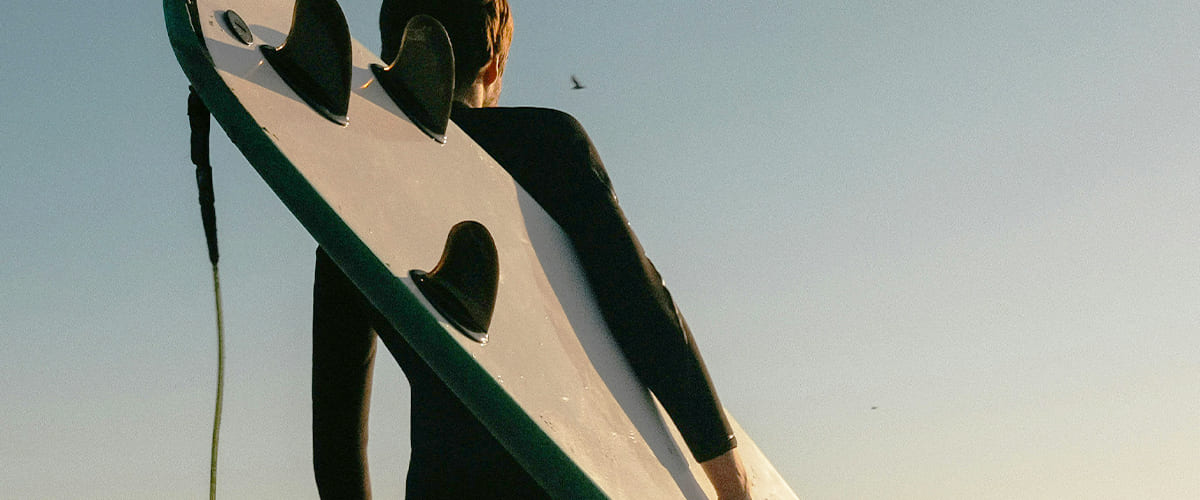 In addition to the board, it's essential to equip yourself with the right accessories to surf in the best possible conditions. These include a wetsuit, to ensure your thermal comfort in the water, the leashThe fins are attached to the underside of the board for stability and maneuverability.
In addition to the board, it's essential to equip yourself with the right accessories to surf in the best possible conditions. These include a wetsuit, to ensure your thermal comfort in the water, the leashThe fins are attached to the underside of the board for stability and maneuverability.
Combination point
Here are a few things to consider when choosing your combination:
- Water temperature: opt for a full wetsuit if the water is cold, and a shorty for warmer waters.
- Neoprene quality: the softer and thicker it is, the better protected you are from cold and irritation.
- Size: choose a well-fitting wetsuit to avoid water ingress and guarantee your comfort of movement.
Find out all our tips for choosing the right wetsuit here!
Drift point
They play a crucial role in surfing and have a significant impact on the surfer's stability, maneuverability and overall performance. Beginners particularly appreciate this increased stability, which makes it easier to learn basic movements.
Direction and control: Centreboards allow the surfer to control the direction of the board. By tilting the board to one side or the other, the surfer can influence the board's trajectory and adjust its orientation in relation to the wave.
Handling: The number, size and shape of fins affect the board's handling. Surfers can choose fin configurations to suit their surfing style and wave conditions. Smaller fins are more maneuverable, ideal for fast turns and dynamic tricks.
Adaptability to conditions: By adjusting the daggerboards to suit the waves, surfers can optimize their performance. Longer daggerboards can offer better grip in more powerful waves, while shorter daggerboards are preferable in smaller conditions.
3. Take a course with an instructor
 To get off to a good start in surfing, nothing beats the guidance of a professional. An instructor will teach you the basics of surfing, as well as the safety rules to be observed in the water. He or she will also guide you step by step in catching waves.
To get off to a good start in surfing, nothing beats the guidance of a professional. An instructor will teach you the basics of surfing, as well as the safety rules to be observed in the water. He or she will also guide you step by step in catching waves.
Familiarize yourself with basic safety rules, such as how to fall correctly to avoid injury, knowledge of tides and currents, and understanding of surf zones reserved for beginners. Respect other surfers and the rules of the water. Learn surfing etiquette to avoid conflicts and contribute to an enjoyable experience for all.
Just as on the road, there are rules of priority in the water to ensure safe and enjoyable sessions! The best thing to do is always to observe other surfers in the water before launching yourself on a wave, so as not to get in anyone's way.
4. Warm up before each session
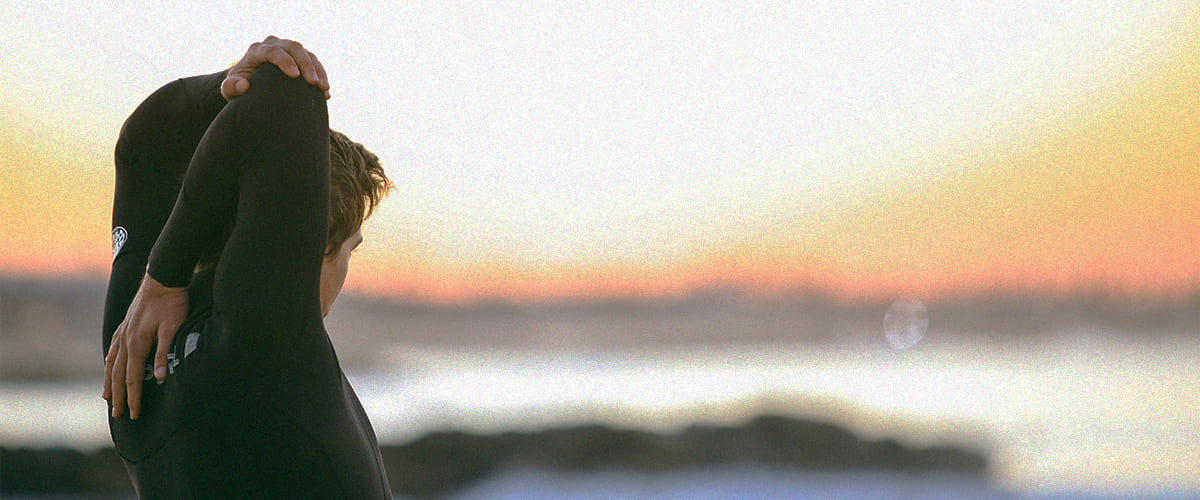 Surfing is a physically demanding sport, involving the whole body. That's why it's essential to do a thorough warm-up before getting into the water, to prevent injury and optimize your performance.
Surfing is a physically demanding sport, involving the whole body. That's why it's essential to do a thorough warm-up before getting into the water, to prevent injury and optimize your performance.
Some warm-up exercises:
- Dynamic stretching (joint rotation).
- Bust gainer and arm rounders to prepare shoulders.
- Squats or lunges to strengthen the legs
5. Learn to read waves and weather conditions
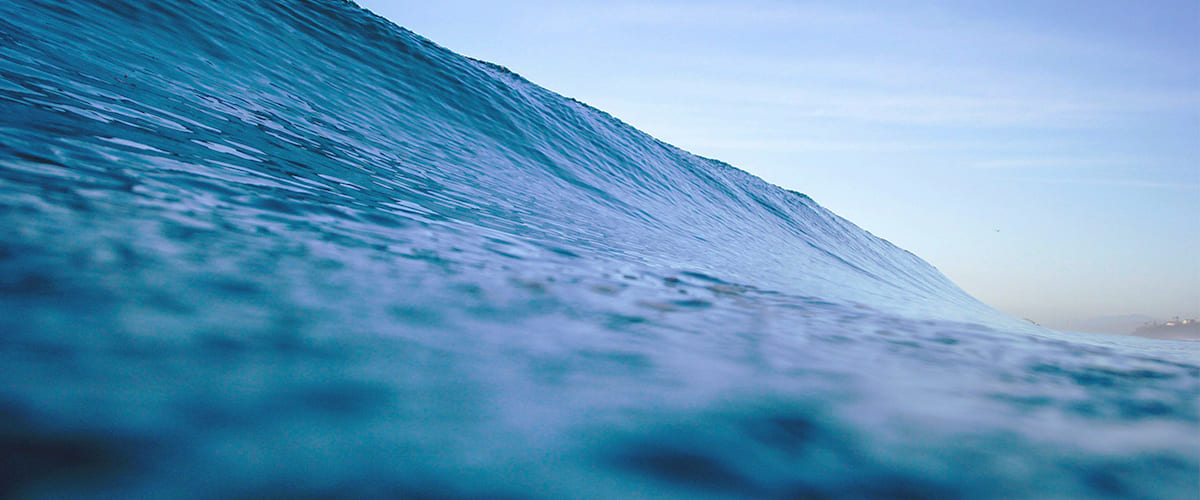 Knowing how to anticipate and understand waves is essential to progress in surfing. Carefully observe currents, tides and the opportunities offered by different waves to choose the best board and the right approach.
Knowing how to anticipate and understand waves is essential to progress in surfing. Carefully observe currents, tides and the opportunities offered by different waves to choose the best board and the right approach.
Start with smaller, less powerful waves. Learning to surf waves adapted to your skill level will enable you to progress with confidence. Surfing is all about getting out of your comfort zone and knowing your limits. Rushing too quickly into powerful waves or rough conditions is the best way to scare yourself.
6. Position yourself correctly on your board
 The right position on the board is essential for keeping your balance and catching waves successfully. Your chest should be in line with the middle of the board, and your feet should touch the back.
The right position on the board is essential for keeping your balance and catching waves successfully. Your chest should be in line with the middle of the board, and your feet should touch the back.
Don't hesitate to adjust your weight on the board as you catch your wave. A nose-diving board means you're too far forward. Sometimes, all you need to do is lift your chest slightly to lighten the front of the board and get into the wave. On the other hand, if you feel that the wave isn't taking you in, you can simply shift your weight to the front and lean your chest against the board. The more you practice, the more natural your positioning will become.
7. Control the oar
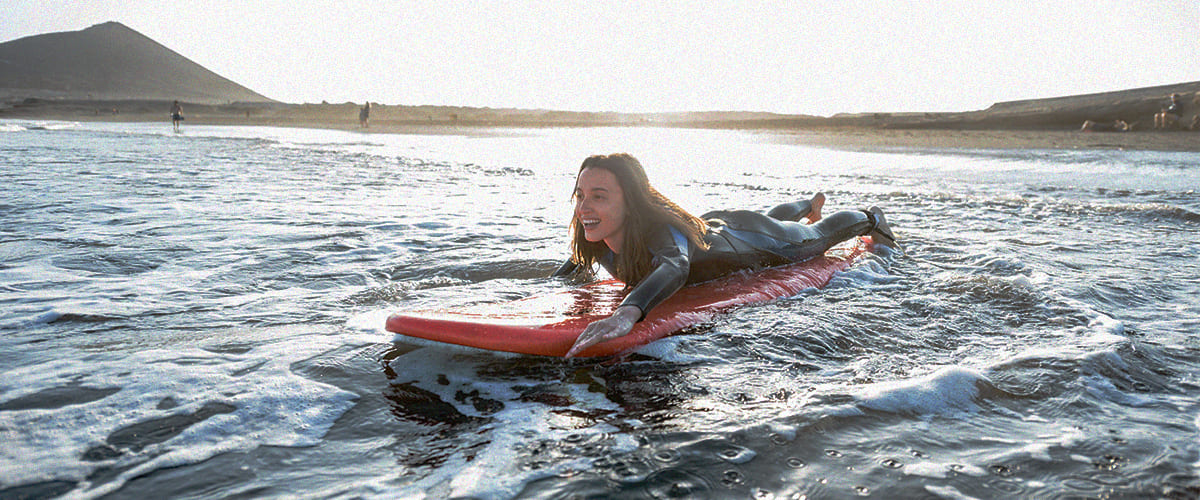 Mastering the art of rowing is essential for getting into the waves. To acquire an efficient rowing technique, remember to coordinate your arm movements and ensure that the support is firmly positioned under your shoulders. Remember that a good, precise and powerful stroke is much better than a fast oar!
Mastering the art of rowing is essential for getting into the waves. To acquire an efficient rowing technique, remember to coordinate your arm movements and ensure that the support is firmly positioned under your shoulders. Remember that a good, precise and powerful stroke is much better than a fast oar!
8. Work on your take-off and balance
 The take-off, or standing up on the board, is probably the most difficult step for beginners. It's a fast movement that requires strength and balance. Don't hesitate to practise on the beach before trying your luck in the water.
The take-off, or standing up on the board, is probably the most difficult step for beginners. It's a fast movement that requires strength and balance. Don't hesitate to practise on the beach before trying your luck in the water.
Balance is the key to surfing. Practice balance exercises out of the water to strengthen your muscles and improve your stability on the board.
9. Watch experienced surfers
 Observe their technique, posture and the way they navigate through the waves. This can provide valuable ideas for improving your own style.
Observe their technique, posture and the way they navigate through the waves. This can provide valuable ideas for improving your own style.
10. Have fun and enjoy the experience
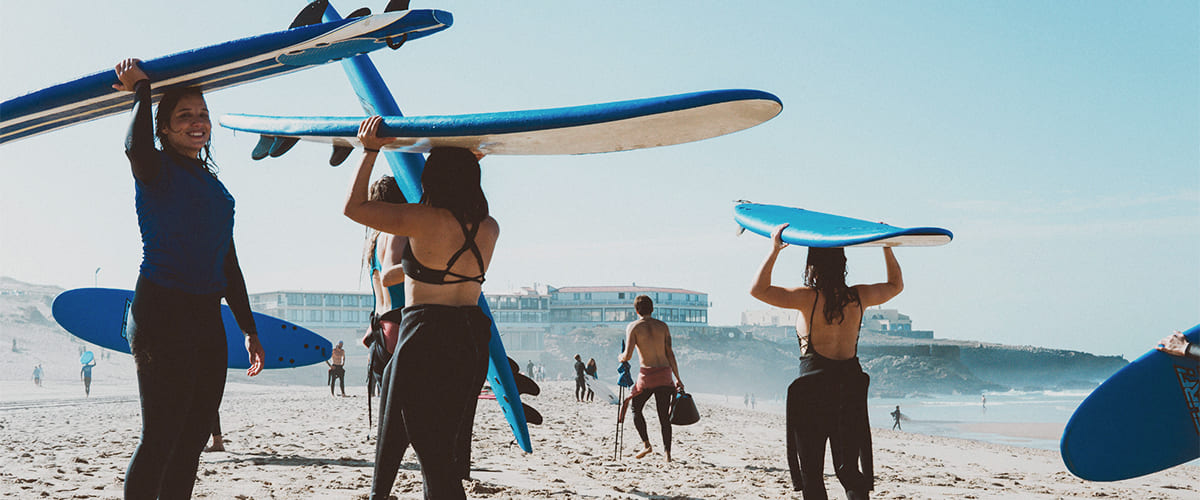 Surfing can be a daunting challenge, but it's important not to be discouraged by the difficulties you encounter. Try new maneuvers, accept falls and celebrate every step forward.
Surfing can be a daunting challenge, but it's important not to be discouraged by the difficulties you encounter. Try new maneuvers, accept falls and celebrate every step forward.
Finally, don't forget that surfing is above all a leisure activity and a means of escape. Don't lose sight of the pleasure of riding the waves and sharing convivial moments with other surfers.
Bonus point
The real secret to progress in surfing: regularity and perseverance.
Regular practice is essential to progress in surfing. The more time you spend on the board, the more you'll develop your skills and confidence. Surfing can be difficult at first, but perseverance is the key. Don't be discouraged by falls and challenges. Every session is a learning opportunity.
By following these tips, you can approach your surfing adventure with confidence and enthusiasm. Surfing is a unique experience that offers not only physical benefits, but also a deep connection with the ocean. So grab your board, dive in and let yourself be swept away by the magic of surfing.









